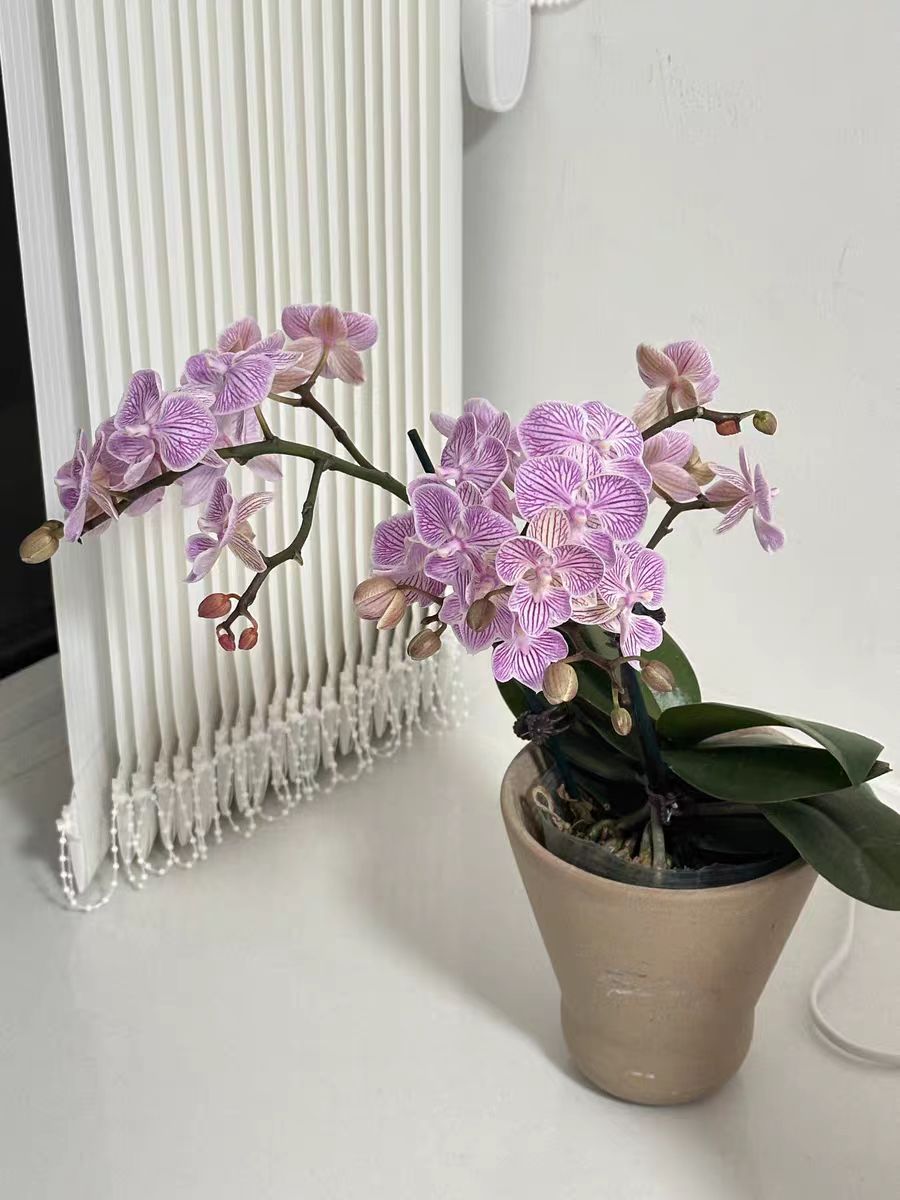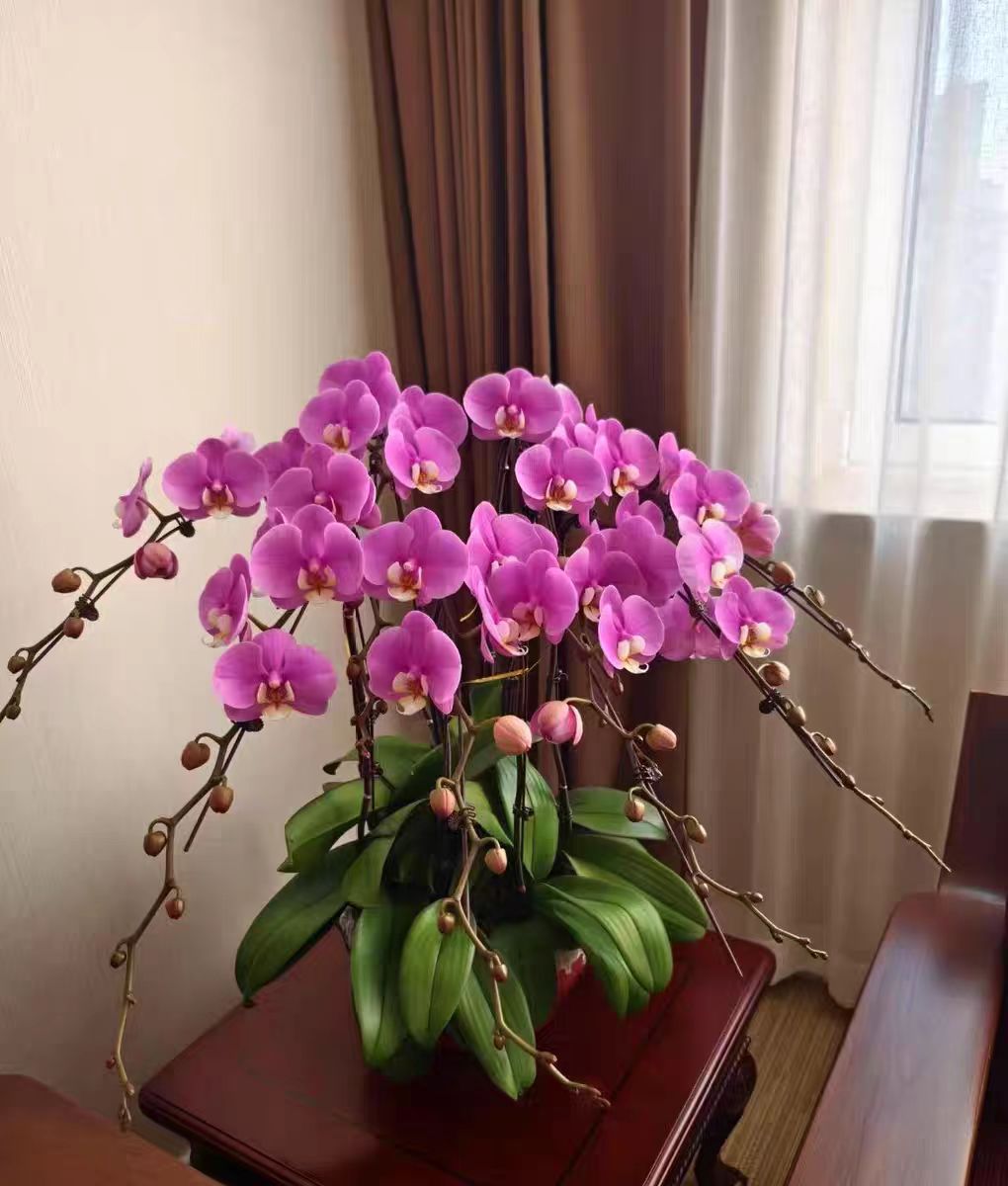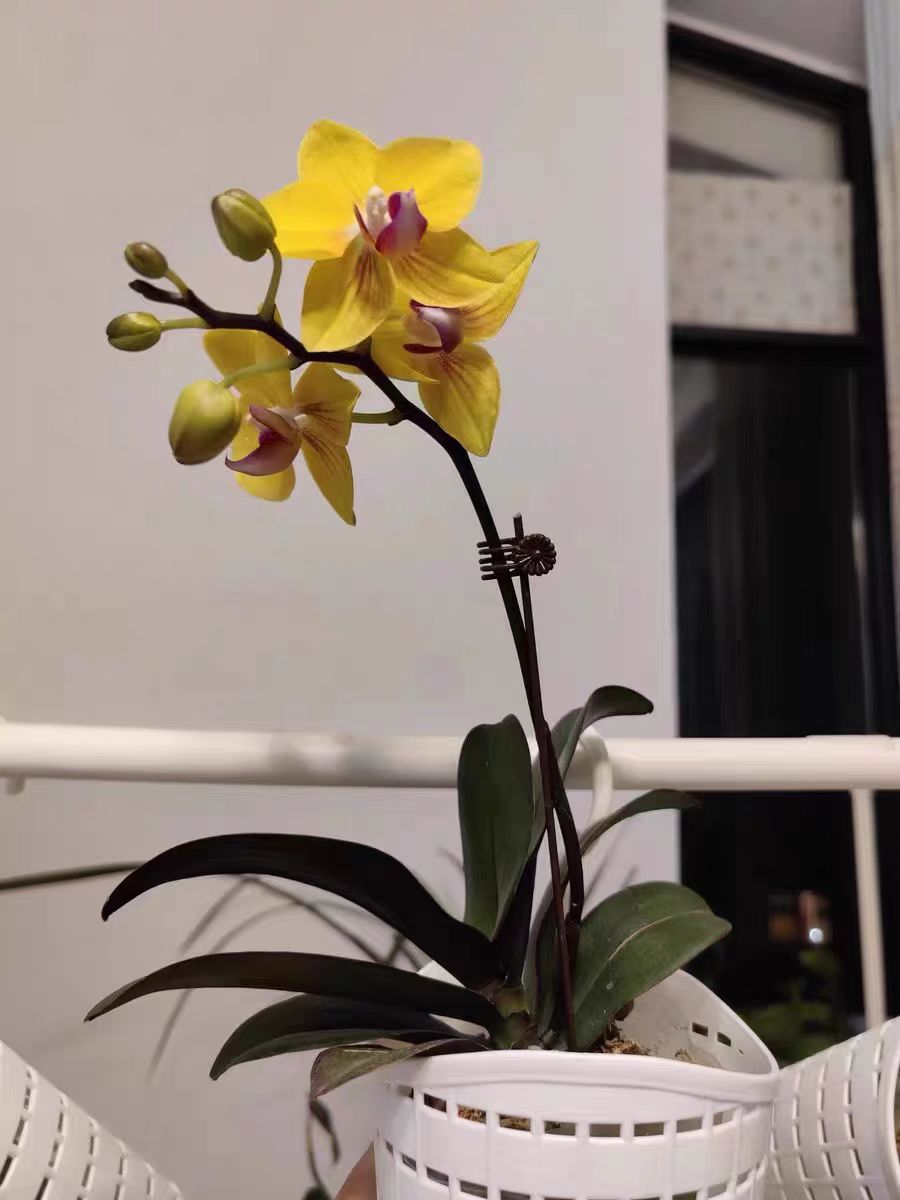To make Phalaenopsis bloom the most beautiful flowers, it is crucial to understand its growth environment and the impact of the growth environment on the flowering period. As a perennial herbaceous plant, Phalaenopsis has specific requirements for its growth environment. The following is a detailed analysis of its growth environment:
Temperature: Phalaenopsis prefers high temperatures, and the suitable growth temperature is between 15 and 28 degrees Celsius. During the flowering period, in order to maintain its healthy growth and extend the flowering period, the temperature should be controlled within a more suitable range, such as 18 to 28 degrees Celsius. The temperature in winter should not be lower than 15 degrees Celsius to avoid the plant from being damaged by cold.
Light: Phalaenopsis likes a semi-shaded environment and is not tolerant of strong direct sunlight. Therefore, Phalaenopsis should be placed in a position with bright light but avoid direct sunlight. Ensuring 4 to 6 hours of diffused light every day allows it to carry out photosynthesis, accumulate nutrients, and prepare for blooming. Insufficient light will lead to weak plant growth and affect flowering; while too strong light will sunburn the flowers and shorten the flowering period.
Humidity: Phalaenopsis likes a humid environment, and the most suitable air humidity is between 60% and 80%. During the flowering period, if the air is too dry, the flowers will lose water too quickly, resulting in a shortened flowering period. However, too high humidity is likely to cause diseases and pests, which will damage the plant.
Soil: Phalaenopsis grows well in loose and well-drained soil. Cultivation with breathable substrates (such as sphagnum moss and pine bark) has a better effect. Such soil conditions are conducive to root respiration and water drainage, avoiding waterlogging that causes root rot.
Ventilation: Good ventilation conditions can reduce the occurrence of diseases and pests and provide a healthy environment for the growth of Phalaenopsis. Therefore, when maintaining Phalaenopsis, it is necessary to ensure that its growth environment is well ventilated.
The length of the flowering period of Phalaenopsis is affected by various environmental factors, mainly including temperature, light, humidity, etc. The following is an analysis of how these environmental factors affect the flowering period of Phalaenopsis:
Temperature: Temperature is one of the key factors affecting the flowering period of Phalaenopsis. Within the suitable temperature range, Phalaenopsis can grow and bloom normally. If the temperature is too high or too low, it will lead to the hindered growth of Phalaenopsis and a shortened flowering period. Especially during the flowering period, the temperature should be controlled within a more precise range to maintain its healthy growth and extend the flowering period.
Light: Light conditions also have an important impact on the flowering period of Phalaenopsis. An appropriate amount of diffused light can provide the energy required for photosynthesis for Phalaenopsis, promoting flower bud differentiation and flower opening. However, too strong light or too long light duration will cause the flowers to wither in advance and shorten the flowering period. Therefore, when maintaining Phalaenopsis, the light duration and intensity should be reasonably controlled.
Humidity: Humidity is one of the factors that cannot be ignored affecting the flowering period of Phalaenopsis. During the flowering period, if the air is too dry, the flowers will lose water too quickly, resulting in a shortened flowering period; while too high humidity is likely to cause diseases and pests, which will damage the plant. Therefore, when maintaining Phalaenopsis, an appropriate air humidity should be maintained to extend the flowering period.
The growth environment of Phalaenopsis is closely related to its flowering period. Only by providing Phalaenopsis with suitable temperature, light, humidity, and substrate conditions can it thrive, bloom beautifully as scheduled, and extend the flowering period, bringing us a longer visual enjoyment.
What is the growth environment of Phalaenopsis?

Share with
Tagged in :




Leave a Reply